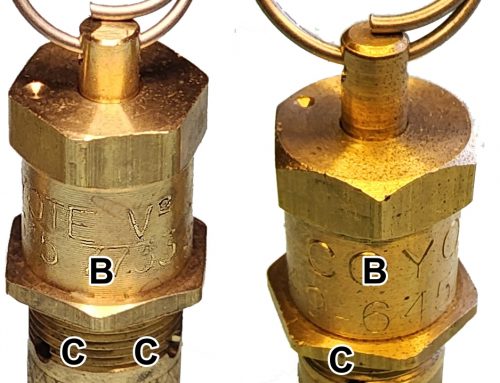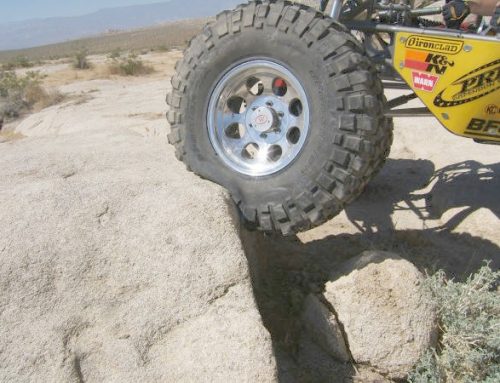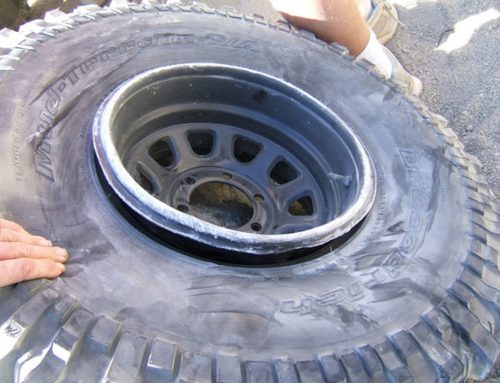HOW TIRE PRESSURE GAUGES WORK
Atmospheric pressure affects most all tire pressure gauges regardless of type, quality or what you paid. The only exception is an “absolute pressure reading-gauge” and I’m willing to bet money, marbles or chalk that no one out there has a tire pressure gauge that reads absolute (tire) pressure. However, if you have an altimeter, it reads absolute pressure. This is PSIA to the pressure geeks. All of our tire gauges read PSIG or “gauge” pressure. That shows tire pressure relative to atmospheric pressure. Don’t believe it? Read on! By the way, for around $150 you can get a PSIA tire gauge just like the NASCAR guys use.
Some folks tend to treat tire pressure like a newborn baby but are totally unaware of the effects of elevation and temperature. This page addresses what altitude does to tire pressure gauge readings. Read about temperature effects on tire pressure and gauges here.
This contraption, in effect, puts several different kinds of gauge mechanisms in a peanut jar “altitude chamber”. Both front and back views show the different types of gauges; primarily, the Bourdon tube, bellows and pencil mechanisms. Using my shop vacuum at “V”, I could vary the altitude and see the effects on tire gauges. It compares the effects on gauges at two different altitudes at one time. I measured altitude with an analog, bellows-type altimeter inside the chamber (not shown). The chamber is best explained with the aid of this schematic.
There are five gauges total attached to the chamber. The A gauge is completely outside the chamber and represents a tire gauge working in an open environment as we normally use tire gauges. It reads the pressure on the manifold, M. The input ends of gauges B and C are outside the chamber; however, their mechanisms are inside. B is my super low pressure inflatable boat pencil gauge, and C is a low-pressure bellows dial gauge bought specifically for this test. B and C “see” the simulated elevation change on their mechanisms with or without pressure at the input end. Two more gauges were arranged with their input ends attached to manifold M. D is a conventional pencil gauge and E is a Bourdon tube dial gauge. Note that their mechanisms are inside the chamber, so they see the simulated elevation change. V is the vacuum connection that achieves an “elevation” change.
Using my shop vac, I could take the chamber from sea level (about where I live) up to 9,000 feet elevation or about 10.51 psi and the nut jar chamber survived perfectly! The altimeter mentioned above confirmed the elevation. With no pressure on the manifold or any of the gauges, B, C, D and E all rose as I drew a vacuum because their mechanisms were inside and they saw the decreased atmospheric pressure. If I could have pulled a perfect vacuum, they would have measured 14.7 psi or atmospheric pressure at sea level. This confirmed that gauges are affected by atmospheric pressure.
With the chamber at sea level (same inside and outside pressure), I pressurized the manifold M and A, D and E showed the increased pressure. I then dropped the chamber pressure (increased the elevation) and D and E showed an increase in pressure, but A showed no change. This again confirmed that gauges read more at higher elevations than at lower elevations on an unchanged tire (pressure). I should add that all gauges were working normally. They were responding to atmospheric pressure as exactly as a PSIG should. This link takes you to the Gauge/Altitude Compensation page where you can see what pressure change to expect with a change in elevation.
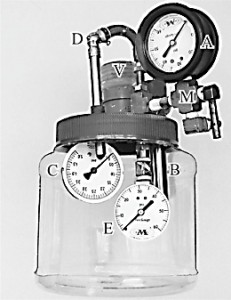
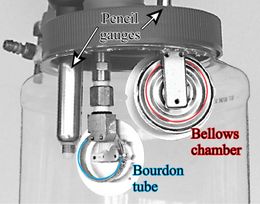
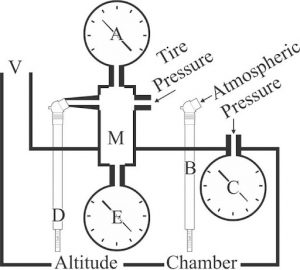
A pencil gauge is the most straightforward way to explain what’s going on. Follow along with this pencil gauge schematic.

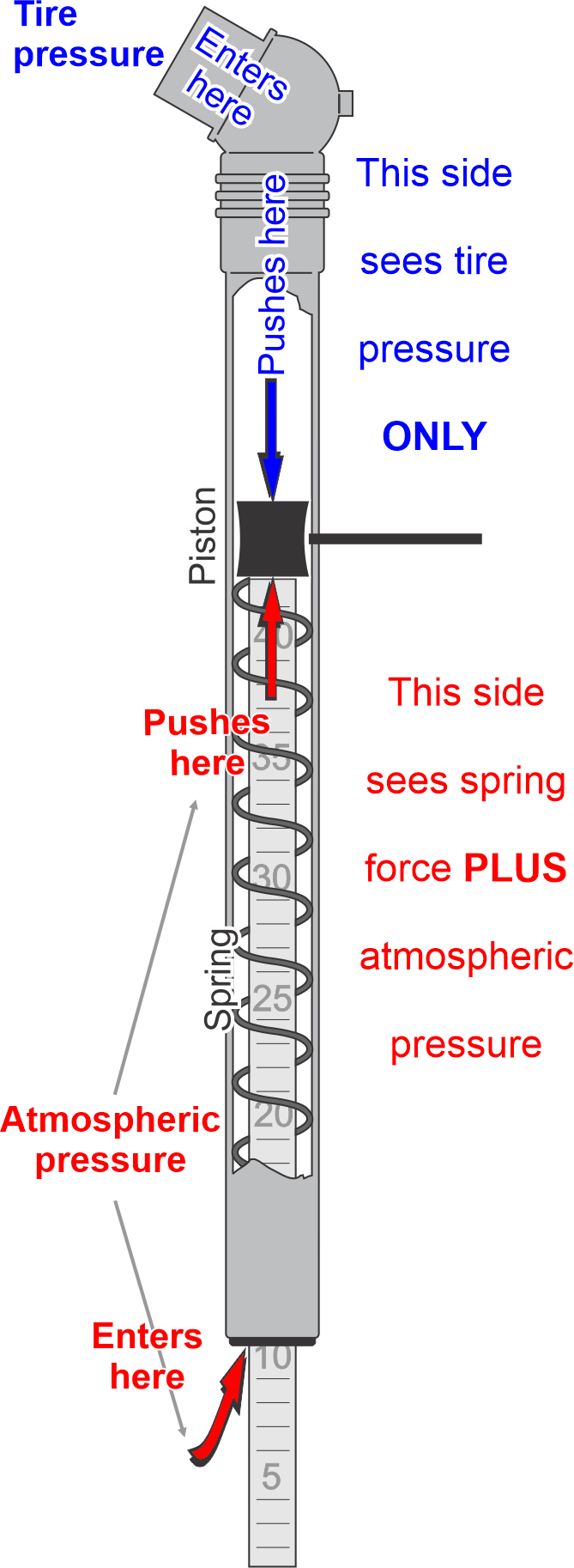
Air pressure enters the input side of all gauges and pushes against some sort of springy-thingy. In a pencil gauge, it’s a piston that also sees a coil spring’s force. In most dial gauges, it’s the spring force of a device called a Bourdon tube (they’re flat and curved, not tubular). In a bellows dial gauge, it’s the bellows chamber. With a digital gauge, it’s a combination of one of the above and a transducer. However, all of these gauges have one more “force” contributing to the measurement side, the outside air pressure. A pencil gauge is simply a cylindrical chamber with an airtight piston inside. The measurement side is always open to atmosphere pressure. The end that you connect to the tire (input side) becomes a closed chamber once it is connected to a tire. It no longer sees atmospheric pressure. So, as the piston moves due to tire pressure, it has to push against the spring plus atmospheric pressure. Atmospheric pressure varies significantly with altitude and, to a much lesser degree, due to weather changes. This creates a gauge reading that varies with change in atmospheric pressure.
Conversely, if the input side is open to atmospheric pressure and you pull a vacuum on the measurement side, it indicates the difference between the two sides of the piston. Test chamber gauges B and C are arranged to see this in action. As I began to pull air out of the chamber, B and C reported the pressure difference! Gauge pressure is a real thing and those “tire mothers” who pay attention to tire pressure like a new born babe must take altitude and temperature into account! More on temperature here.
Want to save $150 and be able to use your PSIG gauge to “read” PSIA pressure? Check out this link.

